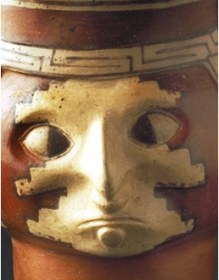resources
Museum Collections - Ancient Peru - Wari

Wari was an Andean culture that existed between A.D. 600-1000. Wari sites are found throughout the highlands. The main site, also named Wari, is located in the central Andes. It is a large site but has suffered much destruction over time, leaving little to be seen now. Wari is famous for its ceramics and textiles, as well as its planned architecture. The images shown on the ceramics and textiles are clearly linked to the Nasca and Tiwanaku cultures, and to the famous oracle site of Pachacamac on the central coast. Wari was originally believed to have been a military state that conquered an empire, but there is little evidence to support this. It may have been more of a religious state, spreading its influence through its images on textiles and ceramics and through trade. Regardless, the Wari culture dominated most of the Andean region. Wari subsistence was based on maize agriculture using both terraces and canal irrigation.




